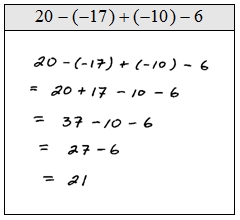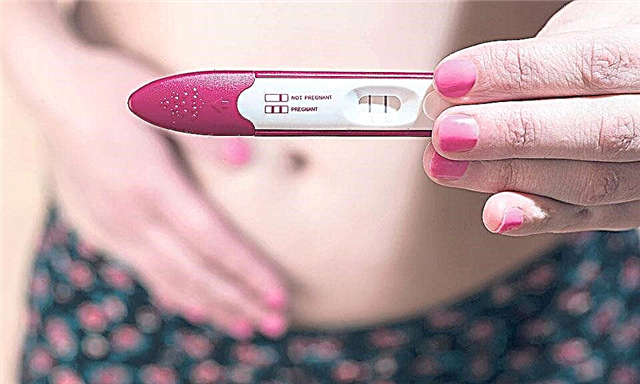
The Apgar scale is used by obstetricians and neonatologists to determine the state of a newborn in the first minutes after birth. The results of such an examination are entered into the children's medical record and are taken into account by pediatricians, as well as by narrow specialists in the first year of a baby's life. For parents, the Apgar scale is often incomprehensible. Let's take a look at what an Apgar score is and how to decipher the points that are given to a newly born toddler.

History
The assessment of all newborns was developed by the anesthesiologist from America Virginia Apgar more than 60 years ago, so the scale bears her name. The purpose of creating such a survey was to quickly assess the condition of babies immediately after childbirth. The method turned out to be very convenient and simple, which allowed him to enter obstetric practice. Today the Apgar scale is used by thousands of doctors in different parts of the world.

Indicators
On the Apgar scale, the following criteria are assessed:
- Baby skin color (Appearance). This indicator is very informative, simple and allows you to identify circulatory disorders. If the baby's body is completely pale or cyanosis is noted over its entire surface, 0 points are given. Pale color is often detected in hemolytic disease. If the body is pink, but the arms and legs are bluish, the child is given 1 point. If the skin of the toddler's body is completely pink, this is 2 points. Since most babies have red skin color, and cyanosis of the limbs is detected very often, this parameter most often underestimates the total Apgar amount (children are rarely given 2 points).
- Baby's heart rate (Pulse). The pulse rate for newborns is 120-140 beats per minute. In the absence of heartbeats, the score will be 0 points. If the pulse is less than 100 beats per minute, the baby is given 1 point. When a newborn's heart rate is above 100 beats, 2 points are given.
- Reflexes and responses to stimulation (Grimace). To determine them, the baby sucks mucus from the nose and looks at his reaction or checks other reflexes. The absence of reflex movements is assessed at 0 points, and for weak reflexes, represented by a grimace and movement, the baby is given 1 point. If the baby actively moves in response to irritation, screams loudly, sneezes, coughs, this is estimated at 2 points.
- The state of muscle tone (Activity). Normally, in a newborn, muscle tone is increased, and the baby is actively chaotically moving its legs and arms. If there is no muscle tone, and the baby's limbs hang down, the parameter is estimated at 0 points. With a weak tone and slight flexion of the limbs, the child is given 1 point, and the activity and the presence of a pronounced tone gives the right to set 2 points on this basis.
- Breathing and crying of a child (Respiration). The age norm for the frequency of respiratory movements for a newly born baby is 40-45 per minute. If the baby screams loudly, this helps him breathe more intensively and is a sign of good adaptation capabilities of the little one. In the absence of breathing, the child receives 0 points. If breathing is irregular and shallow, and the cry is weak, this is 1 point. With normal breathing and loud screaming, the child will have a score of 2 points. If the child has asphyxiation, it is this parameter that lowers the Apgar score.

Decoding
As noted above, the doctor evaluates each of the indicators on a 3-point system: 0 - if the symptom is absent, 1 - if it is weakly expressed, 2 - if everything is normal and the symptom is pronounced. All points awarded are added and received an overall grade.
The following table will help to decipher the sum of points in newborns:

Survey algorithm
The infant's condition is assessed twice - one test is carried out in the first minute of life, and then a second examination is carried out at the fifth minute. The sum of points is written down through a dash (as fractions), for example, 7/8 will mean that immediately after giving birth, the baby had 7 points, and after 5 minutes it became 8 points. If the indicator is 0/4, then this means 0 points at childbirth and 4 points at the fifth minute after birth. If necessary, a third examination is performed at the tenth minute.
The most common Apgar score for healthy babies is 8 points. In such infants, norms (2 points) are noted in three parameters and a slight decrease (1 point) in two indicators, for example, due to cyanosis of the limbs and pulse below 100. Children are rarely given the maximum 10 points.

In most cases, the second / third grade is higher than the first, which is characterized as positive dynamics. This is due to the adaptation of the newborn to new living conditions. The baby's pulse quickens, breathing normalizes, the skin turns pink, the protective reflex and other reactions are more actively manifested. However, there is also a decrease, for example, 9/8 or 8/7. In this case, medical supervision of the baby is intensified.
What the following points mean
Let's look at examples of Apgar scores and their values:

Forecast
Telling parents about the value of the Apgar scale, it should be noted that the sum of the points does not always show the real picture of the baby's health. Do not forget that the score is given by a person (even though he is a health worker), based on his subjective opinion and experience.
This assessment also cannot be called a diagnosis. This is just an auxiliary method for the pediatrician and obstetrician, with the help of which the vitality of the baby is determined in a matter of seconds.
There is no need to be proud of high Apgar numbers, and low numbers should not be a cause for additional alarm. The main task of this method is to help doctors provide timely assistance to the baby.
The difference between 4-5 points and 8-9 points is quite large, but if the baby received 7 or 8 points, this should not upset the mother, because the 9/9 indicator does not mean that the baby is healthier and stronger than the baby with a score of 8 / 8 or 7/7. This may mean that the toddler with 9 points screamed harder, and his reflexes were more pronounced, and the baby with 8 points could have a bluish skin color due to prolonged labor.
Apgar numbers only act as a signal for the obstetric staff, indicating what activities the baby needs in the delivery room and in the postpartum ward. After a general examination, all newborns undergo other examinations (blood tests, urinalysis, ultrasound and other tests), as a result of which the tactics for further medical support of the baby are determined.

In any case, an Apgar score of less than 5 means that a newborn needs much more attention from nursing staff than a baby with scores of 7 or higher. However, if in the first minute the baby received 4-5 points, and in the fifth minute his condition can be assessed at 7 or 8 points, then the baby is transferred to the category of children who do not need close medical supervision.
Note that babies after cesarean often get higher Apgar scores, since the natural way of birth is more difficult for the baby and is often accompanied by hypoxia. For this reason, Caesareans often get grades 8 and 9.
With regard to multiple pregnancies, Apgar scores are predominantly low in twins and twins. In most cases, such babies are born earlier, and in premature babies, development indicators are worse than in babies born at term.
A low Apgar score is also given in case of birth trauma, for example, if it resulted in severe spastic tetraparesis. The consequences of such injuries are different, but it is difficult to say for sure that a child will be disabled in the first minutes after birth. Having set low scores for the baby, the baby is given the necessary help and treatment is prescribed.

Reviews
Doctors consider the Apgar method very important, because on such a scale you can quickly determine whether a baby needs resuscitation in the first minutes after birth. The use of the Apgar scale, according to obstetricians, helps not to get confused and immediately navigate in further tactics of action. This is especially important for novice physicians who have little experience.
Pediatricians who observe the child after discharge from the hospital also respond positively to the Apgar scale. At the first examination of the baby, they always look at the statement and pay attention to the points, taking into account the condition of the baby during childbirth.
As for the parents, some of them study information about the stay in the hospital and know about the Apgar scale, so they do not worry about the ratings 7 or 8. Others, however, are faced with such numbers after childbirth and may perceive them incorrectly. For example, some moms get upset that the score is only 8, and not all 10 points. Someone associates Apgar scores with the mental abilities of the crumbs, which is completely wrong.
There are also mothers who worry that the score does not change, for example, 7/7 or 8/8, believing that the second amount must certainly be higher (taking this as an improvement in the baby's condition). To avoid unnecessary worries, it is worth learning more about the Apgar scale during pregnancy.




